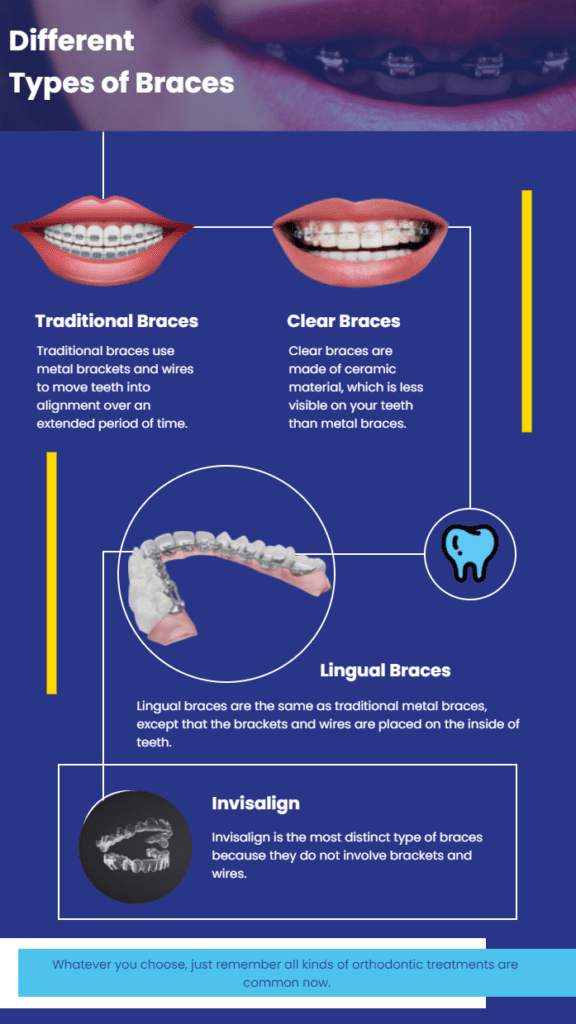Why Cumming Invisalign is the Perfect Selection for a Discreet Orthodontic Option
Why Cumming Invisalign is the Perfect Selection for a Discreet Orthodontic Option
Blog Article
Comprehensive Guide to Orthodontics Procedures for Remedying Dental Imbalances
In the world of orthodontics, the trip to accomplishing a flawlessly aligned smile involves a myriad of treatments customized to deal with dental misalignments. From standard dental braces to unseen aligners and even surgical choices, the field of orthodontics offers a series of services to address varying levels of dental irregularities. Recognizing the details of each treatment, including their devices, advantages, and potential drawbacks, is crucial in making notified decisions about one's orthodontic therapy. As we navigate through the comprehensive guide to orthodontic procedures for correcting dental imbalances, the elaborate information of each technique will certainly unravel, clarifying the course toward a useful and harmonious oral placement.
Orthodontic Procedures Introduction

Normal adjustments and monitoring are essential parts of orthodontic treatment to make certain progression is on track and to make any kind of needed adjustments along the method. By undergoing orthodontic procedures, people can not only accomplish a straighter smile but also enhance their overall oral health and function.
Conventional Dental Braces: How They Work
When considering orthodontic treatments for oral misalignments, conventional braces stand out as a time-tested approach for dealing with teeth positioning. Typical dental braces consist of braces, cords, and bands that function with each other to apply continual stress on the teeth, progressively moving them right into the wanted alignment.
One secret facet of just how conventional braces work is the procedure of bone remodeling. As stress is used to the teeth with the dental braces, the bone surrounding the teeth is reshaped to support the brand-new tooth settings. This remodeling is vital for the long-term security of the dealt with positioning. Individuals will certainly require regular modifications at the orthodontist's workplace to ensure the dental braces proceed to apply the proper stress for effective teeth movement.
Unseen Aligners: Advantages And Disadvantages
These clear, tailor-made trays are practically unseen when put on, making them an enticing choice for people seeking an extra aesthetically pleasing orthodontic therapy. Patients can eliminate the aligners prior to eating or cleaning their teeth, decreasing the threat of food obtaining stuck in the device and simplifying the cleaning procedure.

Surgical Orthodontic Options
Surgical interventions in orthodontics existing viable alternatives for dealing with complex dental imbalances that may not be effectively fixed through conventional orthodontic therapies. While undetectable aligners and standard braces can fix lots of orthodontic concerns, specific situations need surgical intervention to accomplish optimum outcomes. Surgical orthodontic alternatives are generally suggested for serious malocclusions, substantial jaw discrepancies, and situations where the underlying bone framework needs modification to attain proper alignment.
One typical medical orthodontic treatment is orthognathic surgical treatment, which entails repositioning the jaws to deal with useful problems such as trouble eating or talking. This surgical procedure is frequently done in cooperation with an orthodontist that assists line up the teeth prior to and after the procedure. Surgical orthodontics may likewise involve treatments to reveal impacted teeth, remove excess periodontal tissue, or reshape the jawbone to create a much more harmonious face profile.
Before thinking about medical orthodontic options, patients undergo a detailed examination to figure out the need and prospective advantages of such interventions. cumming aligners. While surgical treatment might seem overwhelming, it can considerably improve both the function and aesthetic appeals of the smile in instances where conventional orthodontic therapies fail
Retainers and Post-Treatment Treatment

Post-treatment treatment entails complying with the orthodontist's instructions carefully. This may consist of correct oral hygiene methods, going to follow-up appointments, and wearing the retainers as suggested. Failure to follow post-treatment treatment instructions can result in braces regression, where the teeth slowly move back in the direction of their original settings. Constant retainer wear, excellent oral hygiene, and routine oral exams are necessary for preserving the results attained through orthodontic surgical procedure and guaranteeing the long-lasting stability of the fixed dental alignment.
Final Thought
In verdict, orthodontic treatments offer numerous choices for correcting dental misalignments. Surgical orthodontic options are offered for much more serious misalignments. In general, orthodontic procedures can properly improve oral health and aesthetic look.
As we navigate with the detailed guide to orthodontic treatments for remedying oral imbalances, the detailed details of each approach will certainly unfold, losing light on the course toward a harmonious and useful dental placement. - cumming aligners
One of the most typical orthodontic treatments is the usage of braces, which are composed of metal brackets and cords that apply gentle stress to gradually change teeth into the wanted setting.When thinking about orthodontic therapies for oral imbalances, traditional dental braces stand out as a reliable technique for correcting teeth positioning. Additionally, unseen aligners may not be ideal for complicated orthodontic problems that require more significant teeth movement, as they are generally suggested for light to modest cases. Retainers are custom-made orthodontic gadgets created to hold teeth in their fixed placements after the completion of orthodontic therapy.
Report this page